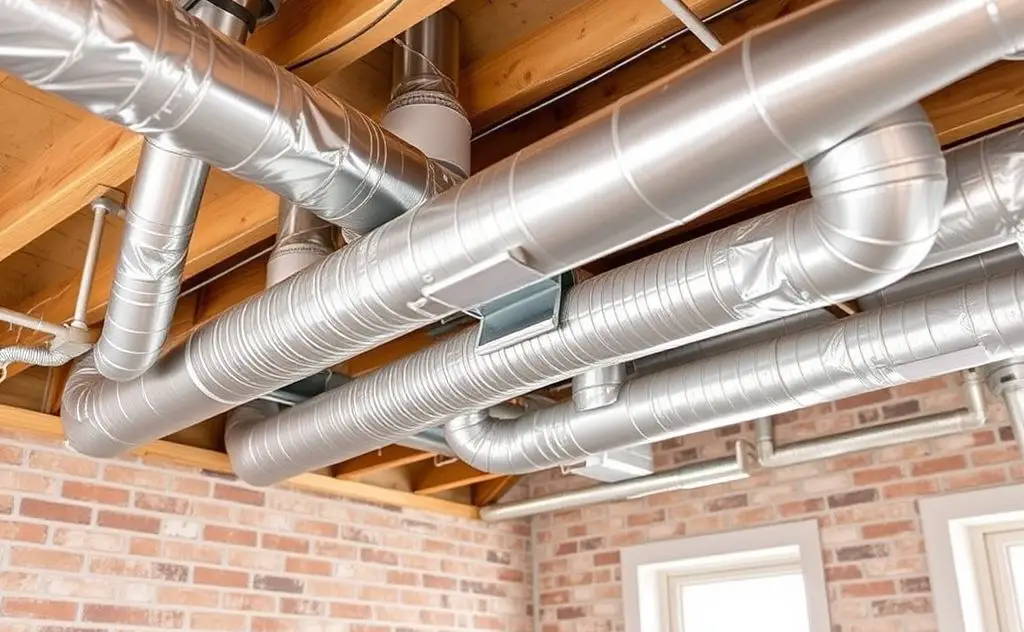Key HVAC design considerations for heat pump integration include system sizing, ductwork compatibility, insulation, and efficient zoning for optimal performance.
Heat pumps offer year-round comfort with exceptional efficiency, but proper HVAC design is critical for optimal performance. This guide explores key considerations for integrating heat pumps into both new and existing systems.

System Sizing and Load Calculations
Accurate load calculations form the foundation of effective heat pump integration. Oversizing leads to short cycling, while undersizing causes inadequate temperature control.
Manual J vs. Rule-of-Thumb
Manual J calculations account for:
- Building orientation and window placement
- Insulation levels in walls, floors, and attic
- Local climate data and temperature extremes
- Air infiltration rates
Heat Pump Capacity Considerations
| Climate Zone | Recommended Oversizing |
|---|---|
| Mild (Zone 1-3) | 0-10% |
| Mixed (Zone 4) | 10-20% |
| Cold (Zone 5-7) | 20-30% |

Ductwork Design for Heat Pumps
Proper ductwork ensures efficient airflow and temperature distribution throughout the home.
Key Ductwork Requirements
- Increased airflow capacity (typically 400-450 CFM per ton)
- Properly sized return air pathways
- Minimal duct runs with smooth bends
- Rigid metal or insulated flex duct preferred
For homes with existing gas heating systems, duct modifications are often necessary to accommodate heat pump requirements.
Refrigerant Line Considerations
Refrigerant lines connect outdoor and indoor units, requiring careful planning.
Installation Best Practices
- Keep line sets as short as possible (under 50 feet ideal)
- Use proper insulation thickness (minimum 1/2″)
- Ensure correct line sizing based on manufacturer specs
- Include service access valves
Defrost Cycle Management
Cold climate heat pumps require periodic defrosting to maintain efficiency.
Defrost System Components
- Temperature and pressure sensors
- Reversing valve for heat pump mode switching
- Supplemental heat source during defrost cycles
According to U.S. Department of Energy, modern heat pumps can maintain efficiency down to -15°F when properly designed.
Integration with Existing Systems
Many homes benefit from hybrid systems that combine heat pumps with existing heating sources.
Common Hybrid Configurations
- Heat pump + gas furnace (dual fuel)
- Heat pump + electric resistance backup
- Heat pump + hydronic radiator system
Controls and Thermostat Selection
Proper controls maximize efficiency and comfort.
Essential Control Features
- Outdoor temperature sensors
- Adaptive recovery algorithms
- Dual fuel capability for hybrid systems
- Smart connectivity for remote monitoring
The ASHRAE Handbook provides detailed guidance on control strategies for various climate zones.
Electrical Requirements
Heat pumps have specific electrical needs that must be addressed.
Key Electrical Considerations
- Dedicated circuit requirements (typically 30-60 amps)
- Voltage compatibility (208/230V most common)
- Surge protection for outdoor units
- Proper grounding and disconnect placement
Maintenance and Service Access
Proper design should account for ongoing maintenance needs.
Service Clearance Requirements
- Minimum 24″ clearance around outdoor units
- Accessible air filters and drain pans
- Service valves positioned for easy access
- Clearance for coil cleaning and refrigerant servicing
